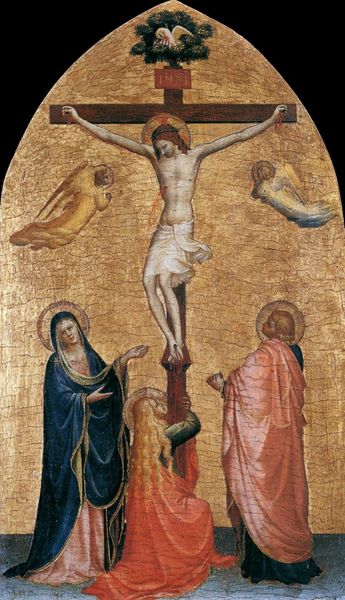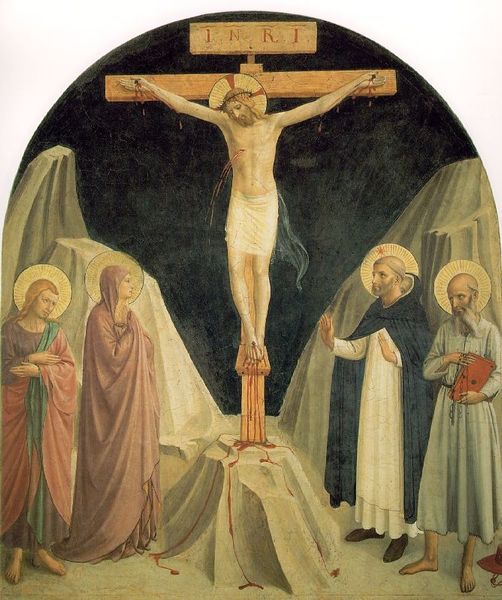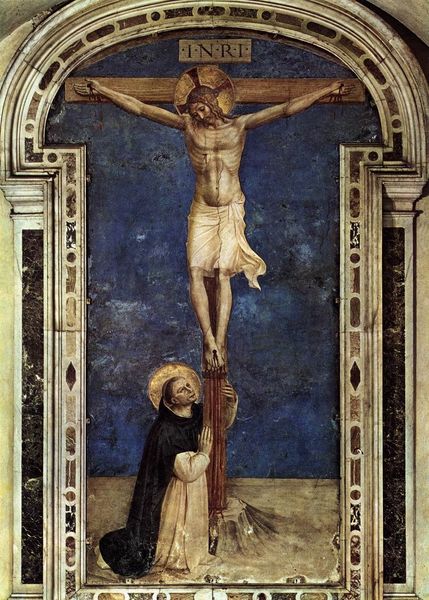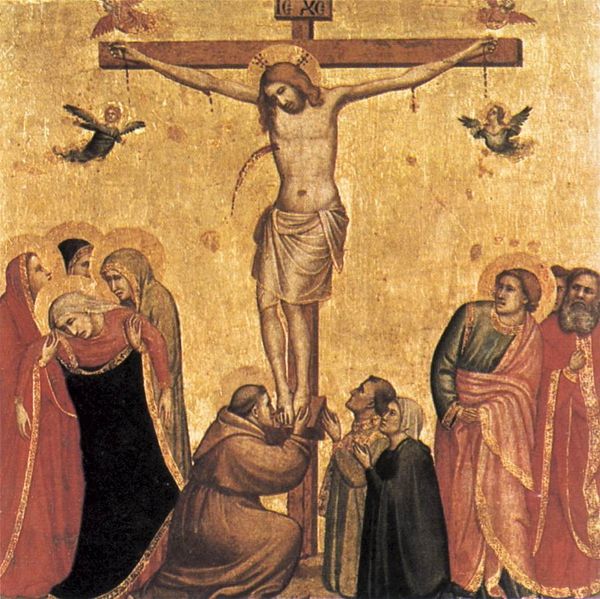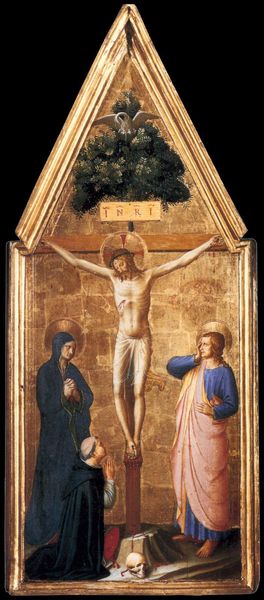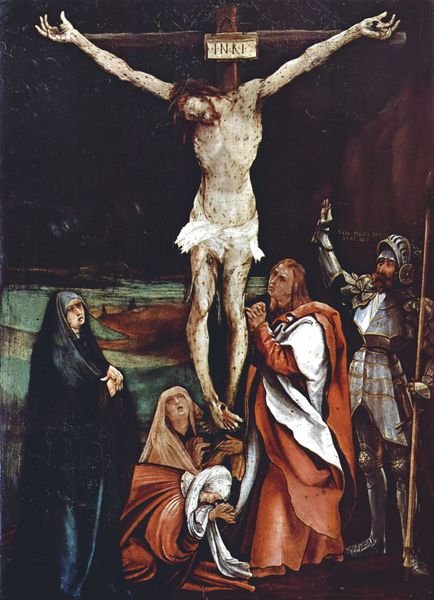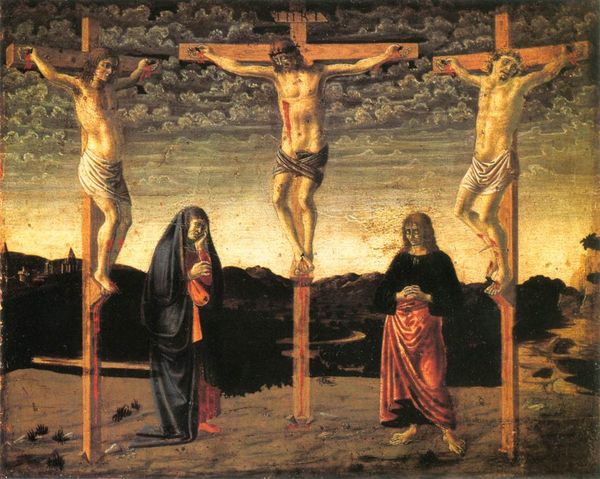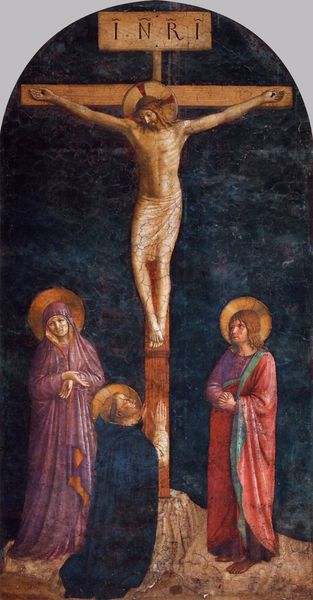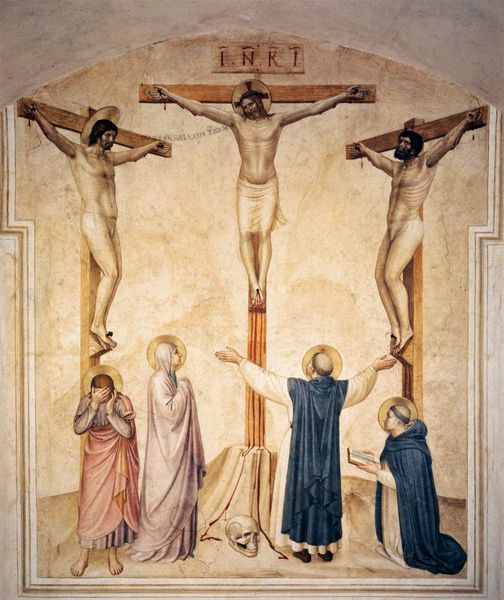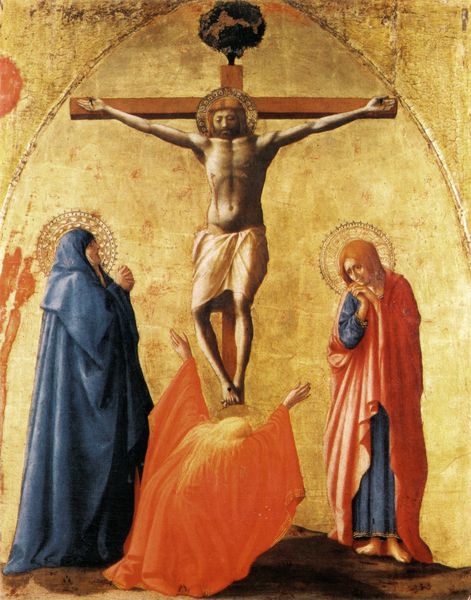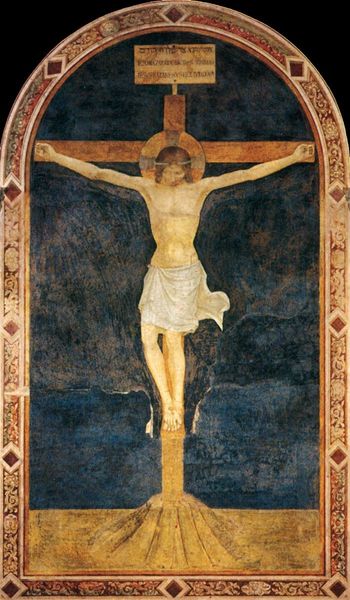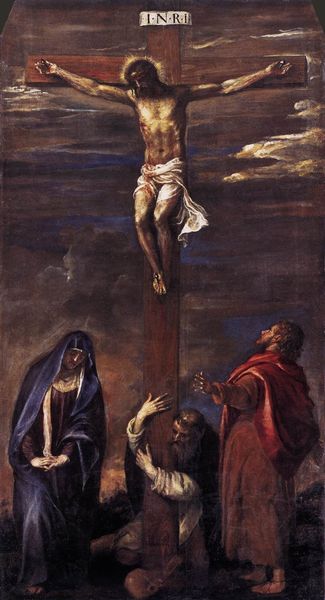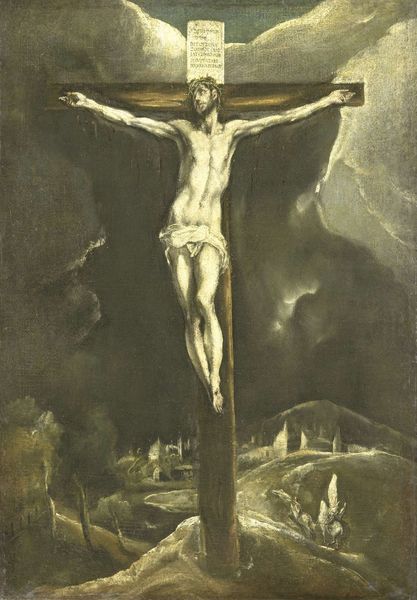
painting, oil-paint
#
portrait
#
painting
#
oil-paint
#
perspective
#
figuration
#
oil painting
#
jesus-christ
#
cross
#
christianity
#
crucifixion
#
history-painting
#
italian-renaissance
#
early-renaissance
Dimensions: 81 x 52 cm
Copyright: Public domain
Editor: Here we have Piero della Francesca's "Crucifixion," painted in 1462 using oil paint. It's striking how solid and almost geometric everything feels, even with such a heavy subject. What aspects of this painting grab your attention? Curator: For me, it's the sheer labor involved in its production. Think of the preparation of the pigments, the grinding, the mixing with oil – each a skilled task. The wood panel itself had to be sourced and prepared, and we should not forget the cost of pigments at the time. Did the cost of those raw materials influence how Piero used them, do you think? Editor: That's a really interesting point! I guess I usually focus more on the finished image, the composition...but what about the people making it. Curator: Precisely. And not only Piero. Think of his workshop – assistants grinding pigments, preparing panels, applying gesso. This was not a solitary act of genius but a collective endeavor dependent on specialized craftspeople and access to raw materials. This painting also shows the relationship between sacred imagery and economic realities: who commissioned it, and for what purpose? It serves as a fascinating insight into workshop practices, labor relations, and economic investment during the Early Renaissance. Editor: So it moves away from just appreciating its beauty and makes us think about production? Curator: Exactly! Instead of just the artistry, we delve into the networks of materials and manpower. And how these systems shape not only the finished product but the very meaning we ascribe to it. What does it mean to depict the Crucifixion at this scale with these specific materials, given their value at the time? Editor: It definitely makes me appreciate the layers beyond just the surface of the painting. It becomes more about this complex historical and social picture than I first realized. Thanks for expanding my view! Curator: My pleasure! Shifting our focus towards the material and the making often opens up richer, and sometimes challenging, avenues for understanding.
Comments
No comments
Be the first to comment and join the conversation on the ultimate creative platform.
